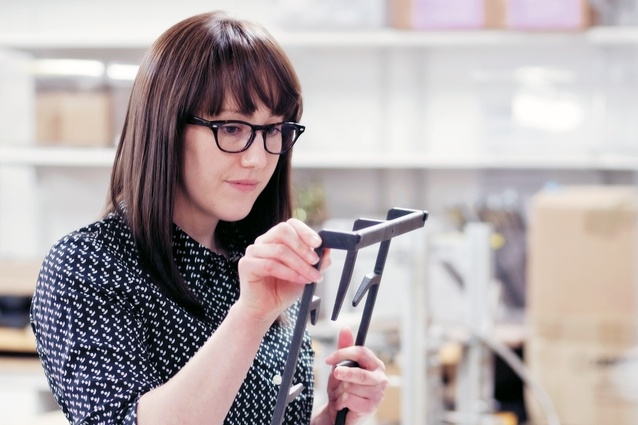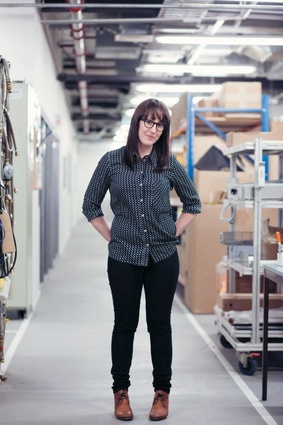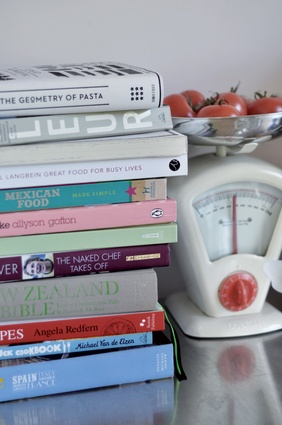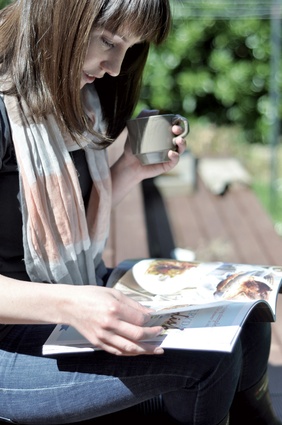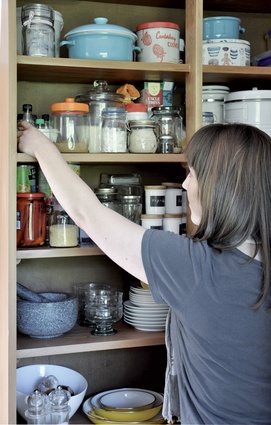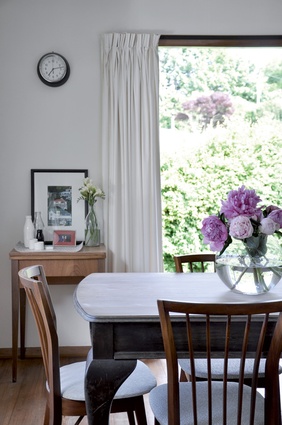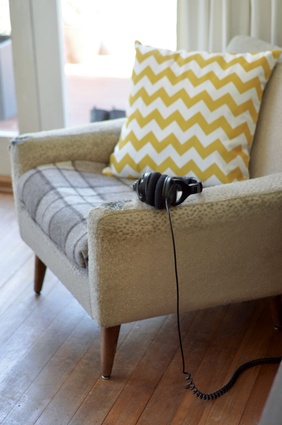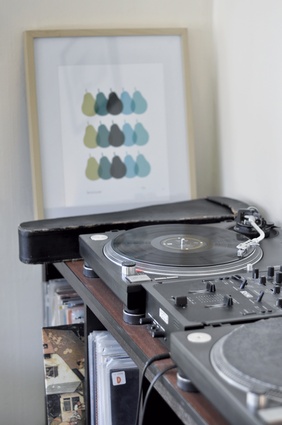Cooking with gas
Last year, at just 29, Lauren Palmer was appointed chief designer for cooking at Fisher & Paykel. Based in Dunedin, it’s her job to manage the team that creates cooktops and stoves for the New Zealand company – and to shepherd those products through from just an idea to a reallife working appliance.
Urbis: You are a chief designer before you’ve turned 30. How did you get so far so fast?
Lauren Palmer: I joined F&P in July 2007 as a graduate industrial designer. I made senior designer in May 2011, and then just took on the chief designer role in August last year.
U: Have you always been such a high achiever?
LP: I was quite studious at high school I suppose… but I didn’t know what I wanted to do. When I finished high school, I got a full-time job working in a fabric store in Christchurch, because I wasn’t sure what I wanted to do yet. I had heard about the industrial design course at Victoria University through an old teacher, but I remember thinking “Why on earth would you want to study that?” It seemed quite removed from what I was interested in.
U: What changed your mind?
LP: I quite liked that it was a mix of engineering and art. So I went along to first year, and thought I would do the first year and see how it went, and I could continue with industrial design, or change and do interior architecture or something else. I had a lecturer in first year who was an architect, and she said to me, “I know you’re going to be good, but you’re not good now”. There were over 100 people in that first year, but she said that to only a couple of us.
U: What do you actually do all day at work?
LP: Mostly I work on cooking products. At the moment I am working on a new free-standing range and an assortment of cooktops. I’m involved from the first concept through to the product testing. We have quite a long product-development cycle: some of our projects take several years to get from a cool idea to a product we can put on the floor and sell. As industrial designers, we span that whole process – other teams might be involved more at the front end, or more at the manufacturing end – but for us it’s really important to get those key insights, understand the customer interests and, in some instances, fight for those decisions right the way through.
U: What do you love about your job?
LP: I find manufacturing really fascinating. I remember when I first went on a factory tour, I thought, “How do you even start thinking about how to make a production line, and understanding how that would work?” I think I would get really bored if I wasn’t designing within constraints. I really believe good design comes from constraints. We have to work within different standards and all these different markets, and we complain, but those force you to look for the opportunity.
U: Tell us about your blog.
LP: That’s been an ongoing project for three and a half years. I have been working with a team of designers and product evaluators on a cooking blog, Our Kitchen, developing recipes and content for that. Once a month, we craft our own recipes, cooking, styling and photographing the creations.
U: What do you like to cook?
LP: I love to bake; I have a real sweet tooth. I love to make salads with bits and pieces fresh out of our glasshouse at home. And at the moment I am in a Mexican food craze and have been making pork carnitas, salsas, tortillas and lots of beans and rice.
U: What kind of cook are you?
LP: I like to experiment. I am not very good at just following a recipe; I always love to put my own spin on it. I am a messy, passionate and disorganised cook. When my partner Carl is back for the weekend, we usually crank up the tunes and cook together, which I love. I make the best snacks but I am not a good housewife. Our house is either spotless or a tip. I hate to clean the bathroom but love to vacuum. I hate to weed but love to pick herbs and veggies from the garden. I have old-fashioned views on putting the rubbish out, disposing of spiders and changing light bulbs. Other than that I like to think I am fairly independent.
U: What’s your kitchen like?
LP: At the moment, it is an original 1960s’ kitchen built out of solid rimu. We have stripped back years of paint and ripped the doors off one unit to have an open-shelving kind of look which suits the house. We are planning to renovate the rest of it next year. Ironically, for someone working for an appliance company, I have no dishwasher as there is no space right now.
U: What’s your favourite appliance in the house?
LP: My Kenwood stand mixer. It was my grandmother’s; she had eight kids and used to whip up baking to feed them all, plus many visitors. She recently moved from the family home she had been in for 50 years into a rest home and it’s nice to have a little piece of family history here with me in Dunedin. I also have a Singer sewing machine table that I scored from the Salvation Army in Wellington when I was studying. It is mid-century, with slim legs and a warm timber veneer. The sewing machine itself is mint green and in great condition. It appeals to my love of mid-century furniture along with my interest in fabrics and fashion.
U: What design pieces do you covet?
LP: At the moment, I am all about things for my home – a Zig Zag rug from DwellStudio and an Arco Lamp.
U: What’s important in industrial design, and design in general, these days?
LP: Thoughtful, purposeful design that is only as detailed and complicated as required to fit the task it must perform. We need to think carefully and be kind to the end user. And consider the whole life cycle of the product.

